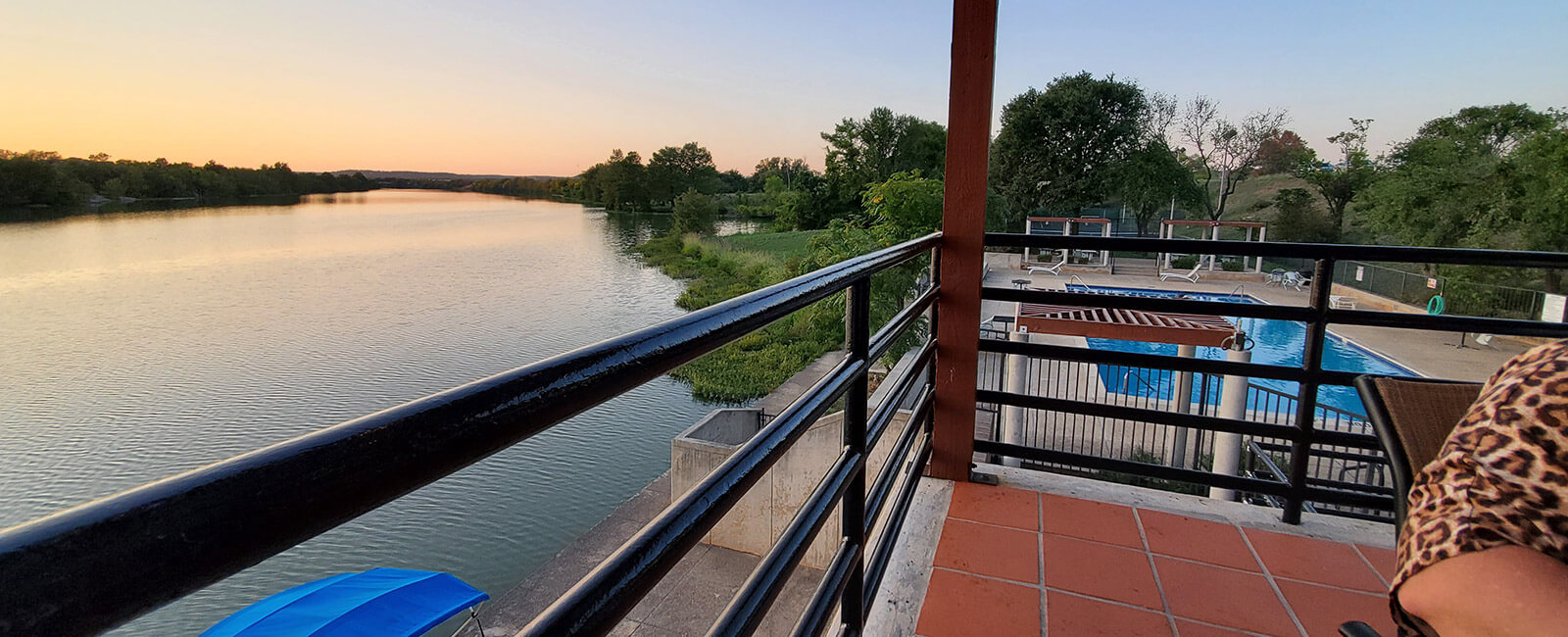About Kerrville
Nestled in the heart of the Texas Hill Country right along the gorgeous Guadalupe River, Kerrville, Texas, is a special paradise full of friendly people, where the air is always clean and fresh, and the low humidity climate is enjoyable year-round.
Known for breath-taking views, beautiful parks and abundant recreational activities, our unique city has long been recognized as one of the healthiest areas of Texas, offering an active life style with many fun and exciting things to do.

On April 14, 1689, Alonso De Leon (1639 — 1691), Spanish explorer and governor, began exploring westward in Texas and discovered a river of rare beauty lined with giant cypress trees, native walnut and pecan trees. De Leon named the river “Our Lady of Guadalupe.” He reported that the banks of the river were covered with good timber.
During the mid-eighteenth century, Spanish military units traversed the area while defending San Antonio from Apache attacks, but it was not until the mid-1800s that the area was settled. Joshua D. Brown, born in Kentucky in 1816, came to Texas in 1830.
In 1844, Brown was living in Gonzales when he became interested in a new industry: the making of cypress shingles. He led a party of 10 men up the Guadalupe River and in 1846 they selected a site near a large spring in what is now Kerrville. Here they developed one of the first shingle camps in the territory and remained and worked for several months until the Apache presence in the area became troublesome and Brown and his men were driven from the area.
In 1848 Brown and his followers returned. This time they remained, naming their settlement Brownsborough. A number of settlers followed, establishing sawmills and farms along the river and various streams. At the request of Joshua Brown, the name of Brownsboro was changed to Kerrsville, for his friend and fellow veteran of the Texas Revolution, Major James Kerr. Kerrsville became the county seat and later the "s" was dropped and the town became "Kerrville."
In 1856, a legislative act created Kerr County and dictated that the new county be named in honor of "James Kerr, the first American settler on the Guadalupe River." Technically Kerr County could have been named Brown County in honor of the very first settler Joshua Brown (1816-1874).
The name Kerr honors soldier, statesman and surveyor, Major James Kerr, who was born in Kentucky on September 21, 1790. Josh Brown was a close friend of the Kerr's and a settler of Gonzales, a settlement that Kerr had founded.
Kerr was a young soldier who fought in the War of 1812, and became a Lieutenant. Joshua Brown, known as the "Father of Kerrville," was recorded as the first actual settler to make his home on the upper Guadalupe River.
In 1857, German master miller named Christian Dietert and millwright Bathasar Lich started a large grist and saw mill. Related mercantile and freighting enterprises led to the foundation of the Charles Schreiner family empire of retail, wholesale, banking, ranching, marketing and brokering operations.
Major changes in the Texas wool industry began in the 1860s, Texas sheep raising boomed from mutton to wool production. During the Civil War, the textile companies turned more and more to wool-cloth manufacturing, creating a further boom in the Texas wool industry.
By 1890 Charles Schreiner had elevated Kerrville to prominence. Adopting a system of wool warehousing, Schreiner added to it by agreeing to sell producers' wool on a commission basis to eastern buyers. For a percentage of the sale's price, he agreed to handle, store, and sell the wool. His combination warehouse and commission sales operation was unique (until late in the twentieth century Texas was the only state with such a scheme), profitable, and convenient. His busy teamsters carried food, equipment, and supplies to ranchers and hauled back to Kerrville the annual wool clips. Moreover, he financed many ranchers by providing loans, and he encouraged the spread of fine wool sheep, especially delaines, the American merino strain.
With the start of Reconstruction, Kerrville began to prosper. Demand for fine building lumber, farm and ranch produce, and skilled craftsmen boosted the town's economy. Kerrville's growth was further aided as Indian raids eventually ceased, windmills and barbed wire were introduced, and successful sheep, cattle and goat ranches were established in the area. Cattle drives punctuated the boom years of the late 1880s and 1890s.
The Kerrville Water Works Company began to provide water for town dwellers in 1894. Telephone service was introduced in 1896 and the town began to pave streets in 1912.Kerrville survived recessions and the Great Depression far better than many towns. Wealthy and diversified even in the 1920s and 1930s, the town rapidly surpassed many of its neighbors economically and became a regional transportation, banking and medical center for the western Hill Country and Edwards Plateau.
Mooney International, Inc., a Chinese-owned manufacturer of single-engine general aviation aircraft, moved to Kerrville in 1946. Among its achievements were the first pressurized single-engine, piston-powered aircraft production of the fastest civilian single-engine, piston-powered aircraft in the world, the first production aircraft to achieve 201 mph on 200 horse power and the fastest transcontinental flight in a single-engine, piston-powered production aircraft. All Mooney aircraft have the signature vertical stabilizer with its vertical leading edge and swept trailing edge that gives the illusion of being forward-swept.
Kerrville and the surrounding areas are full of historic sites which have shaped the history of Kerrville. Kerrville's healthy climate, wildlife and scenery gave rise to tourism. After the 1940s the area attracted a new generation of postwar "living city, but thinking and singing country" Texans.
Kerrville has displayed steady growth to the present day. The town's economic base has diversified and broadened through business, agriculture, light manufacturing, health care, transportation services, education, the arts and tourism. By the mid-1990s the Wall Street Journal described Kerrville as "one of the wealthiest small towns in America."

